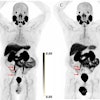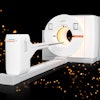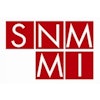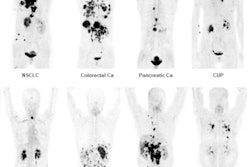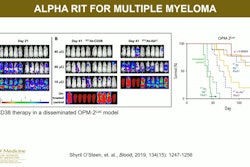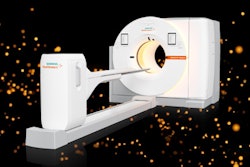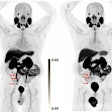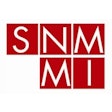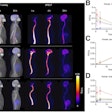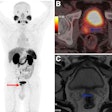A select group of eight radionuclides holds hope for an emerging cancer treatment in nuclear medicine called targeted alpha therapy (TAT).
While treatments that employ beta-emitting radionuclides such as lutetium-177 have reached the market and are being used for prostate cancer and neuroendocrine tumors, cancer treatments that use alpha emitters are in various stages of development, from preclinical studies to phase III trials. These therapies kill cancer cells by causing DNA breaks within the cells.
 Targeted alpha therapy's mechanism of action. Graphic courtesy of John Tackett and Vani Vijayakumar, MD.
Targeted alpha therapy's mechanism of action. Graphic courtesy of John Tackett and Vani Vijayakumar, MD.
While the leading eight -- with the exception of terbium-149 -- have all been tested in humans, the radionuclides of highest interest so far are actinium-225, astatine-211, and lead-212, Tackett explained.
 Targeted alpha therapy's elite eight. Graph courtesy of John Tackett and Vani Vijayakumar, MD.
Targeted alpha therapy's elite eight. Graph courtesy of John Tackett and Vani Vijayakumar, MD.
Ultimately, most hospitals conducting trials receive doses of these eight radionuclides from upstream radiopharmaceutical production facilities, with U.S. companies such as Terra Power Isotopes and Shine Technologies, for instance, well-positioned to meet increasing demands. Worldwide, the International Atomic Energy Agency (IAEA) IAEA recently touted its activities to meet increasing demands for the radionuclides and narrowed its focus to three.
Moreover, several of these eight are being used to co-develop SPECT and PET imaging agents in the field of theranostics. Overall, their impact on patient care will be significant, Vijayakumar noted.
“In a year or two, I think we'll be able to get them,” she said.

